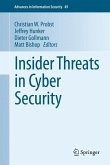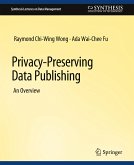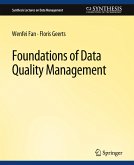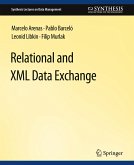As data represent a key asset for today's organizations, the problem of how to protect this data from theft and misuse is at the forefront of these organizations' minds. Even though today several data security techniques are available to protect data and computing infrastructures, many such techniques -- such as firewalls and network security tools -- are unable to protect data from attacks posed by those working on an organization's "inside." These "insiders" usually have authorized access to relevant information systems, making it extremely challenging to block the misuse of information while still allowing them to do their jobs. This book discusses several techniques that can provide effective protection against attacks posed by people working on the inside of an organization. Chapter One introduces the notion of insider threat and reports some data about data breaches due to insider threats. Chapter Two covers authentication and access control techniques, and Chapter Three shows how these general security techniques can be extended and used in the context of protection from insider threats. Chapter Four addresses anomaly detection techniques that are used to determine anomalies in data accesses by insiders. These anomalies are often indicative of potential insider data attacks and therefore play an important role in protection from these attacks. Security information and event management (SIEM) tools and fine-grained auditing are discussed in Chapter Five. These tools aim at collecting, analyzing, and correlating -- in real-time -- any information and event that may be relevant for the security of an organization. As such, they can be a key element in finding a solution to such undesirable insider threats. Chapter Six goes on to provide a survey of techniques for separation-of-duty (SoD). SoD is an important principle that, when implemented in systems and tools, can strengthen data protection from malicious insiders. However, to date, very few approaches have been proposed for implementing SoD in systems. In Chapter Seven, a short survey of a commercial product is presented, which provides different techniques for protection from malicious users with system privileges -- such as a DBA in database management systems. Finally, in Chapter Eight, the book concludes with a few remarks and additional research directions. Table of Contents: Introduction / Authentication / Access Control / Anomaly Detection / Security Information and Event Management and Auditing / Separation of Duty / Case Study: Oracle Database Vault / Conclusion
Bitte wählen Sie Ihr Anliegen aus.
Rechnungen
Retourenschein anfordern
Bestellstatus
Storno








